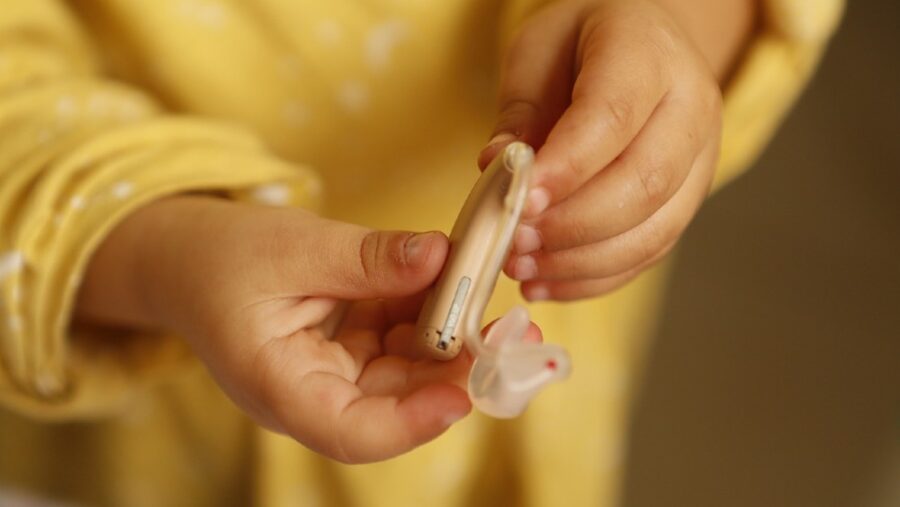Deaf Children Gain Hearing After Radical Gene Therapy

As MIT Technology Review reports, a groundbreaking and successful radical gene therapy in China represents a significant milestone in medical history. Having provided hearing to a number of previously deaf children, the therapy provides renewed hope and a tangible solution to certain types of congenital deafness.
The therapy pinpoints a defect in the otoferlin gene—a gene indispensable for transmitting sound information from the ear’s hair cells to the brain. Lacking this protein, the auditory pathway malfunctions.
A six-year-old girl, Li Xincheng—known affectionately as Yiyi—is one of the therapy’s remarkable beneficiaries. Although she was born deaf, Yiyi can now hear, exemplifying the fantastic, transformative effect of this pioneering treatment. The therapy involves the application of a virus to add replacement DNA into cells within the deaf children’s inner ears, responsible for picking up vibrations and transmitting sound to the brain.
Within a month, an astounding development occurred—Yiyi began to hear with her treated ear, engaging more fully with the world around her and, for the first time in her life, hearing the chime signaling the end of naptime at school.
No, this is not sci-fi. Rather, Yilai Shu, a surgeon and scientist at Fudan University, Shanghai, spearheaded the incredible scientific feat. Before the human trials restoring hearing to deaf children, his team conducted extensive research and testing on mice and guinea pigs, perfecting the gene delivery to the inner ear. The therapy pinpoints a defect in the otoferlin gene—a gene indispensable for transmitting sound information from the ear’s hair cells to the brain. Lacking this protein, the auditory pathway malfunctions.
The Chinese success in restoring hearing to deaf children has galvanized the field globally, leading to potential broader implications of gene therapy in treating other forms of deafness.
Chiefly, the groundbreaking treatment entailed splitting the sizable otoferlin gene (consisting of approximately 6,000 DNA letters) into two distinct parts. These parts were then placed in separate viruses. Following this, scientists carefully injected said viruses into the cochlea of the deaf children’s ears where, once inside the body, these DNA sections recombined, eventuating the production of the vital otoferlin protein.
Wonderfully, Yiyi is one of several children who have experienced a marked improvement in their hearing ability. Indeed, the procedure’s success embodies a significant advancement—but it’s pertinent to note that it applies explicitly to deafness born of defects in the otoferlin gene, accounting for 1 percent to 3 percent of congenital deafness cases.

Sure, this may seem like a small percentage. However, the Chinese success in restoring hearing to deaf children has galvanized the field globally, leading to potential broader implications of gene therapy in treating other forms of deafness.
And the unbelievably transformative effects of the treatment extend beyond the clinical success. For instance, Yiyi, who already received a cochlear implant in one ear, can now amazingly and naturally from the other ear post-treatment. Simultaneously, another one of the children in the study is reportedly beginning to utter words for the first time.
The therapy involves the application of a virus to add replacement DNA into cells within the deaf children’s inner ears, responsible for picking up vibrations and transmitting sound to the brain.
Constituting a notable victory in the broader race for cures to various genetic conditions, the Chinese team’s achievement surpasses efforts by several Western biotechnology companies. More saliently, the therapy’s success in enabling hearing in deaf children underscores the potential for more affordable gene therapy options, particularly in countries like China, where cost-effectiveness is all-important.
While excitement understandably surrounds the breakthrough, challenges remain. These include the long-term persistence of the treatment’s effects and the limitations regarding the specific type of deafness it can address. Still, the therapy marks a vital, incredible step forward in science and medicine—literally providing hearing to deaf people.












